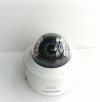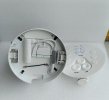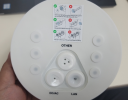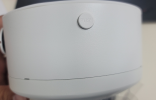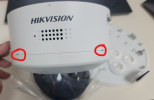- Sep 4, 2017
- 194
- 325
New ptz cams in a slightly larger dome housing: DS-2CD2746G2H - Interesting...
But then the datasheet says: Max 1000 ptz cycles. Is this the expected time to mechanical failure?

And miraculously 4, 6 and 8 MP all have the same sensor size

Also available as hybrid (ir/white light) where half of the ir leds are replaced by white light. I've got careful with Color night vision since the image in my experience is most of the time way more "washed out" then Ir illuminated images.
So night-image wise the 4MP would be most interesting. I don't trust the 0.0008 Lux at all since even among Hikvision product these ratings are completely inconsistent in my experience.
I haven't used domes outdoors to omit the reflection risk. Did that get better? With these models they advertise "moving" light shades.
Price ranges around 280 USD.
But then the datasheet says: Max 1000 ptz cycles. Is this the expected time to mechanical failure?
And miraculously 4, 6 and 8 MP all have the same sensor size

Also available as hybrid (ir/white light) where half of the ir leds are replaced by white light. I've got careful with Color night vision since the image in my experience is most of the time way more "washed out" then Ir illuminated images.
So night-image wise the 4MP would be most interesting. I don't trust the 0.0008 Lux at all since even among Hikvision product these ratings are completely inconsistent in my experience.
I haven't used domes outdoors to omit the reflection risk. Did that get better? With these models they advertise "moving" light shades.
Price ranges around 280 USD.
- I'm interested in your thoughts on this.
- Maybe you already had hands on these new models.
- what average use case cams would you select from Hikvision portfolio today?

